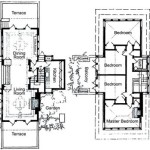529 Plans and Off-Campus Housing: Understanding the Rules and Regulations
A 529 plan, named after Section 529 of the Internal Revenue Code, is a tax-advantaged savings plan designed to encourage saving for future education costs. These plans are generally sponsored by states or state agencies and come in two primary forms: prepaid tuition plans and education savings plans. Prepaid tuition plans allow individuals to purchase tuition credits or contracts at today's prices for use at eligible institutions in the future. Education savings plans, on the other hand, are investment accounts similar to 401(k)s or IRAs, where earnings grow tax-free and withdrawals are tax-free if used for qualified education expenses.
The flexibility and potential tax benefits of 529 plans have made them a popular vehicle for families looking to fund higher education. However, understanding the rules and regulations surrounding qualified expenses is paramount to avoid penalties and ensure compliance. One common area of confusion centers on the use of 529 plan funds for off-campus housing. While tuition, fees, books, supplies, and equipment are generally considered qualified education expenses, the eligibility of housing costs depends on specific criteria that must be met.
The Internal Revenue Service (IRS) defines qualified higher education expenses as those necessary for attendance at an eligible educational institution. An eligible educational institution is generally any college, university, vocational school, or other post-secondary educational institution eligible to participate in the student financial aid programs administered by the U.S. Department of Education. This definition includes most accredited public, private, and proprietary post-secondary institutions.
When it comes to housing, the IRS stipulates that room and board expenses are considered qualified, but only up to a certain limit. This limit is generally the amount included in the cost of attendance as determined by the eligible educational institution for federal financial aid purposes. The institution calculates the cost of attendance, which includes tuition and fees, room and board, books and supplies, transportation, and other miscellaneous expenses, to determine a student's financial need and eligibility for federal student aid.
The specific amount allocated for room and board within the cost of attendance varies significantly from institution to institution and depends on factors such as the location of the school, the availability of on-campus housing, and the estimated cost of living in the area. It is crucial for 529 plan holders to consult with the educational institution's financial aid office to determine the exact room and board allowance for a particular student and academic year. This information is typically available on the institution's website or by contacting the financial aid office directly.
Key Point 1: Determining the Qualified Housing Expense Limit
The most critical aspect of using 529 plan funds for off-campus housing is understanding the limitation based on the institution's cost of attendance. The amount that can be withdrawn tax-free from a 529 plan for housing expenses is capped at either the actual amount the student pays for housing or the institution's allowance for room and board, whichever is less. This rule is designed to prevent individuals from using 529 plan funds to cover excessive or unreasonable housing costs.
For example, if a university estimates the cost of room and board for an academic year to be $12,000, and the student's actual off-campus housing expenses are $10,000, the student can withdraw $10,000 from the 529 plan tax-free to cover these expenses. However, if the student's off-campus housing expenses are $15,000, the student can only withdraw $12,000 tax-free, which is the amount specified by the university as the room and board allowance. The excess $3,000 would be considered a non-qualified withdrawal and subject to income tax and a potential 10% penalty.
It is essential to maintain meticulous records of all housing expenses, including rent payments, utility bills (if included in the lease or if the student is responsible for them), and any other related costs. These records may be required to substantiate the qualified nature of the withdrawals in the event of an audit by the IRS.
Furthermore, it is important to note that the room and board allowance typically covers the academic year only, not the entire calendar year. If a student resides in off-campus housing during the summer months, the expenses incurred during that period may not be considered qualified, unless the student is enrolled in summer courses and the housing is necessary for their attendance.
Key Point 2: Specific Requirements for Off-Campus Housing
Beyond the cost of attendance limitation, there are specific requirements that must be met for off-campus housing to be considered a qualified expense. First and foremost, the student must be enrolled at least half-time at an eligible educational institution. This means that the student must be taking at least half the normal full-time workload for their course of study.
Full-time and half-time enrollment status is determined by the institution and may vary depending on the program of study. It is crucial to verify the specific enrollment requirements with the school's registrar or academic advising office to ensure that the student meets the minimum enrollment criteria.
Secondly, the off-campus housing must be necessary for the student's attendance at the educational institution. This generally means that the student must be living in the housing primarily to attend classes and participate in academic activities. If the student's primary purpose for living in the housing is for reasons unrelated to their education, the expenses may not be considered qualified.
For example, if a student lives in an off-campus apartment primarily to be closer to a part-time job or to enjoy the social scene in the area, rather than to attend classes, the housing expenses may not be considered qualified, even if the student is enrolled at least half-time. The IRS may scrutinize situations where the connection between the housing and the student's education is tenuous or unclear.
In addition, the off-campus housing must be used by the beneficiary of the 529 plan, which is the student for whom the plan was established. If the housing is shared with other individuals who are not the beneficiary of the 529 plan, only the portion of the expenses attributable to the beneficiary is considered qualified. For example, if a student shares an apartment with two roommates, only one-third of the rent and utilities can be considered a qualified expense, assuming the expenses are shared equally.
Key Point 3: Documentation and Record Keeping
Maintaining accurate and thorough documentation is crucial for substantiating the qualified nature of 529 plan withdrawals for off-campus housing. This documentation should include, but is not limited to, the following:
•
Lease agreement:
A copy of the lease agreement outlining the terms of the rental, including the monthly rent, the names of all tenants, and the address of the property.•
Proof of rent payments:
Records of rent payments, such as cancelled checks, bank statements, or receipts from the landlord. These records should clearly indicate the date, amount, and payee of each payment.•
Utility bills:
If utilities are not included in the rent, copies of utility bills (electricity, gas, water, etc.) showing the student's name and address. If the bills are in the name of a roommate, documentation demonstrating that the student is responsible for a portion of the expenses may be required.•
Enrollment verification:
Documentation from the educational institution verifying the student's enrollment status, including the number of credit hours or the percentage of full-time enrollment.•
Cost of attendance information:
Documentation from the educational institution specifying the room and board allowance used for federal financial aid purposes. This information is typically available on the institution's website or by contacting the financial aid office.•
529 plan statements:
Records of all withdrawals from the 529 plan, including the date, amount, and purpose of each withdrawal.•
Correspondence with the institution:
Any correspondence with the educational institution regarding the student's enrollment status, cost of attendance, or financial aid eligibility.It is advisable to store these documents in a safe and organized manner, either electronically or in paper form. In the event of an audit by the IRS, these records will be essential for demonstrating that the withdrawals were used for qualified education expenses.
Furthermore, it is crucial to consult with a qualified tax advisor or financial planner to discuss your specific circumstances and ensure compliance with all applicable rules and regulations. Tax laws can be complex and subject to change, and professional guidance can help you avoid costly errors and maximize the benefits of your 529 plan.
In addition to maintaining detailed records, it’s also wise to understand how the 529 plan reports distributions. Each January, the 529 plan administrator will send out a Form 1099-Q to the beneficiary (typically the student) and the account owner, detailing the total distributions made during the previous year. This form is crucial for preparing your tax return, as it helps determine whether the distributions were used for qualified education expenses.
When preparing your tax return, you generally won’t need to report 529 plan distributions as income if all the funds were used for qualified education expenses. However, you may need to keep track of these expenses and have supporting documentation readily available in case the IRS requests it. If any portion of the distribution was not used for qualified education expenses, that amount will be subject to income tax, and potentially a 10% penalty, on the earnings portion of the non-qualified distribution.
Coordination with other education tax benefits is also important. The American Opportunity Tax Credit and the Lifetime Learning Credit provide valuable tax relief for educational expenses. However, you cannot claim these credits for the same expenses paid with 529 plan funds. Careful planning is necessary to optimize the use of these benefits and avoid claiming overlapping deductions or credits. A tax professional can help you navigate these complex rules and determine the most advantageous strategy for your situation.

Do 529 Plans Cover Off Campus Housing And Meals

Ready To Use Your 529 Plan Coldstream

529 Plan Qualified Expenses Using The To Pay Off Campus Steve Brown Apartments

Using Your 529 To Pay For Off Campus Housing How College

529 Plan Reimbursements For Off Campus Housing

Can I Use My 529 Plan For Off Campus Housing Tips

Paying For Off Campus Housing With A 529 Plan Kiplinger

What Is A Qualified Educational Expense For 529 Plans

Q A Can I Use 529 Funds For Off Campus Housing Marotta On Money

Can A 529 Plan Be Used To Pay For Room And Board The Education








